(various 1/72 kits)
[ Page 7 ]
1/72 scale kits of the Mikoyan Gurevich MiG-21
... continued from MiG-21 page 6.....
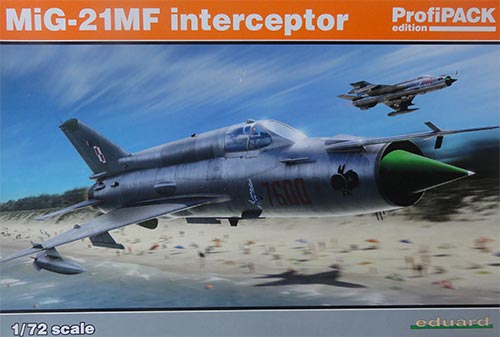

A recently released brand new kit of the MiG-21 is from Eduard. This is the best kit up till now in 1/72 scale of any MiG-21. The kit #70141 is for a MiG-21 MF interceptor. There are several releases, this is a "Profi pack edition". In the box are 3 sprues with plastic parts, 1 sprue with clear parts, a photo etch fret with details in full colour print, a masking set and a very nice decal set. This kit release is as Eduard suggests for an MF aircraft from probably the Sedivka Gorki plant with no oval shaped re-enforcement panels on top of the wing halves and "deep cut-out" on the sides of the jet exhaust.
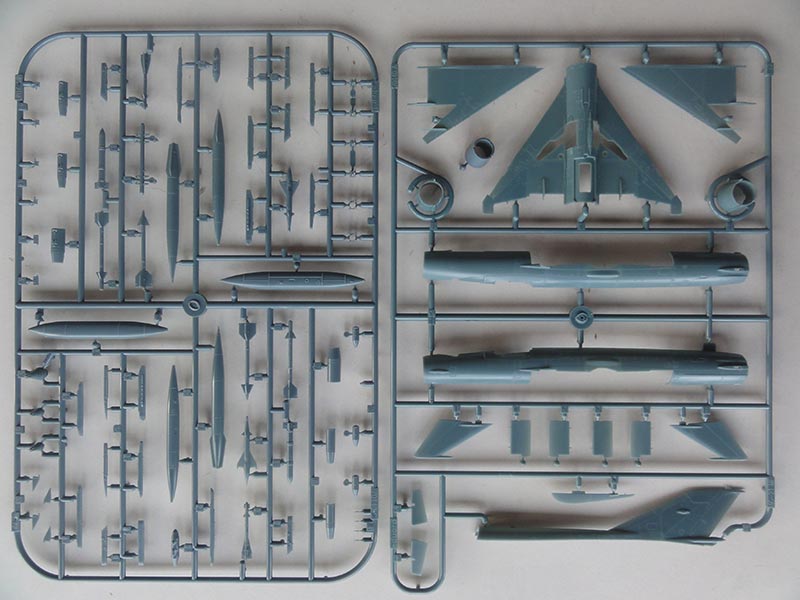
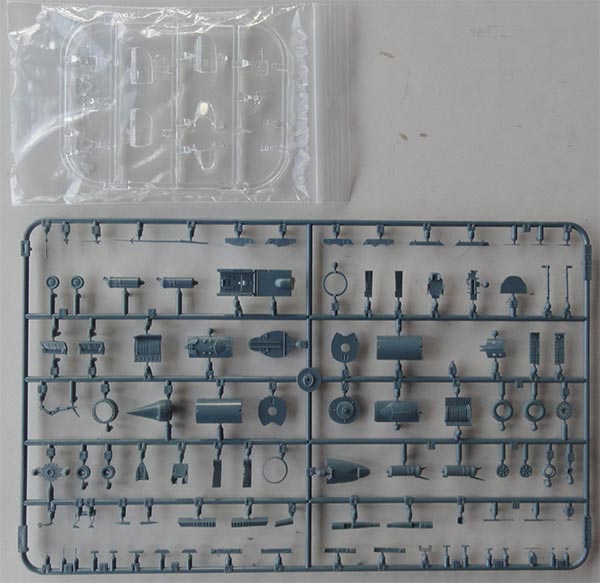
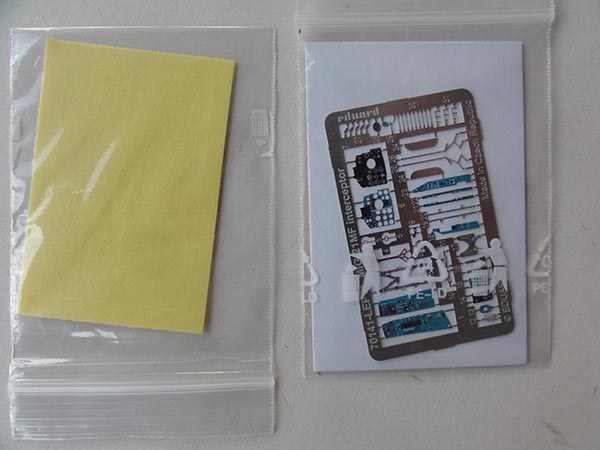
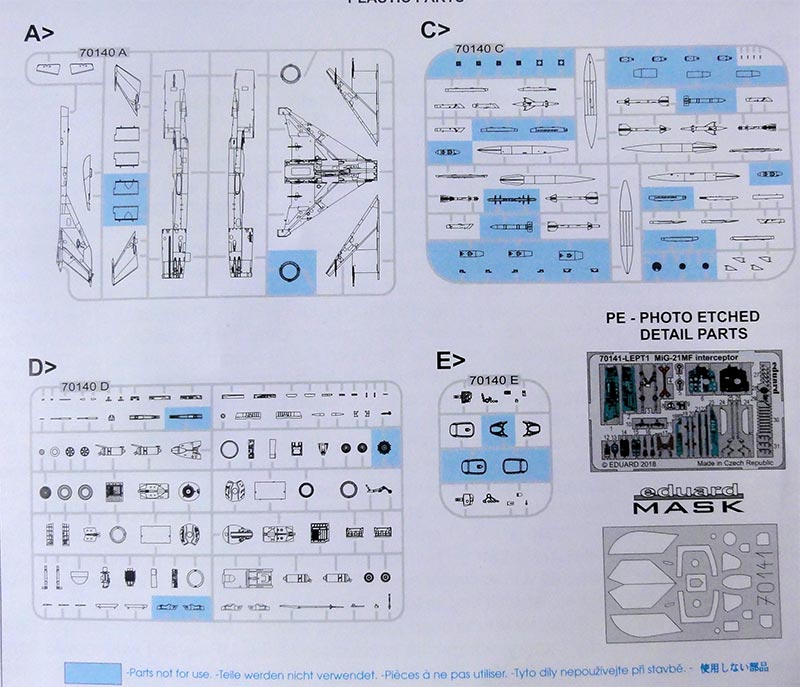
Decals for no less than 5 schemes:
-A- Poland in a metal scheme, 1990s
-B- CzechoSlovakia in metal scheme 1990s
-C- DDR camouflage, of Jagdfliegergeschwader 3, late 1980s
-D- Romania in a metal scheme of Regiment 71, 1990s
-E- Mali, African camouflage, 2006
... and a lot of stencilling.
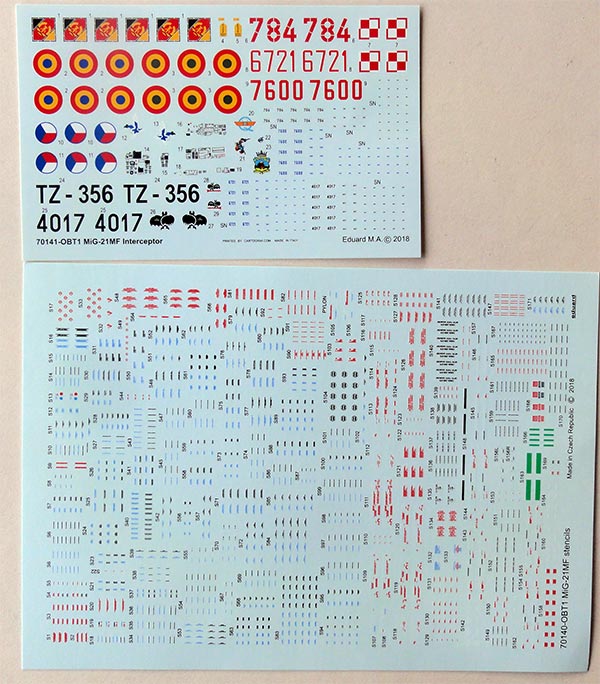
There is also a very detailed decal set with stencils included.
In the box you will also find very finely moulded weapons and stores like a central 800l, usual 490l fuel tanks, RS-2US rockets, R-13, R-3S and R-60 missiles with the pylons and adaptors. A pair of JATO bottles are also in the kit.
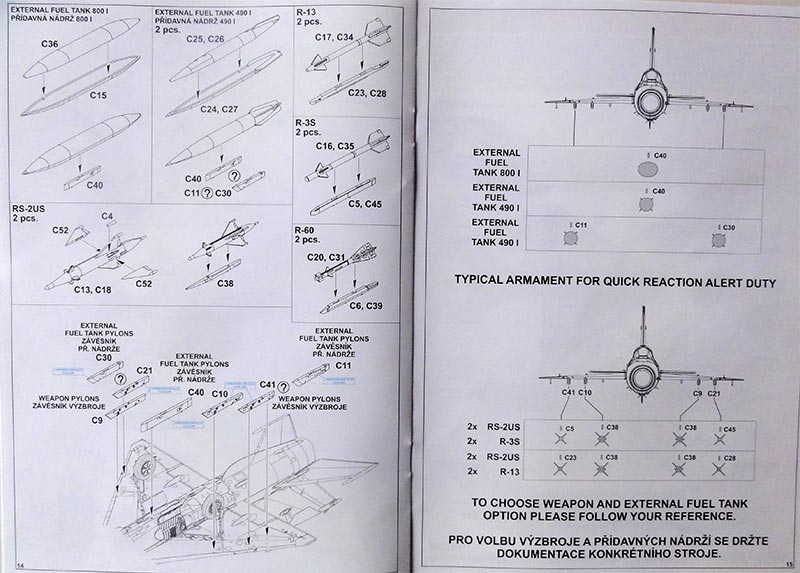
The instruction booklet is very good, provides details on differences (even in painting the smaller parts) and is no less than 24 pages of glossy paper. You also get alternative parts to show the rear airbrake open or closed and different main wheel hubs.
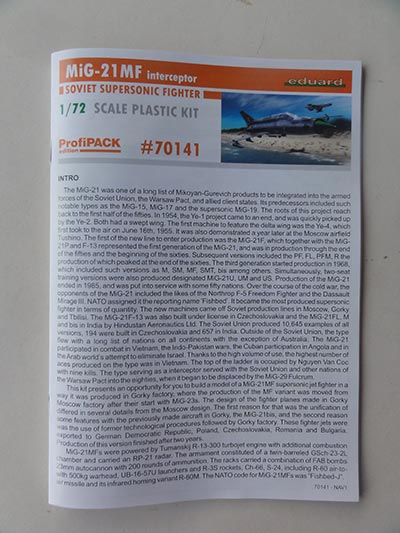
Indeed a very good kit!
The kit is for the MiG-21 MF. Some parts are unused such as a spare wind shield and canopy, doors, a rocket pod, small bombs and larger bomb and other lower gun fairing. So this suggests that other version kits of the MiG-21 will also be released by Eduard. (obviously I will thankfully use the spare parts on other MiG-21 models to be made).
Parts breakdown is a bit unusual with a one piece wing + lower fuselage section. But don't worry, everything fits perfectly as I found out during assembly.
I opted to make the MiG-21 MF in the Mali air force scheme -E- as per kit, a nice addition to the "World Air Forces in Plastic" collection.
The book "Soviet and Russian Military Aircraft in Africa" (see ref.) "African MiGs/ Volume 2" by Tom Cooper shows this real MiG on page 47; a pair of ex-Czech MiG-21 MF are used by Mali according to bort number info, the others are MiG-21 Bis and a pair of UM trainers.

Construction starts with the very well detailed cockpit. You get in this "Profi Edition" coloured etched metal instrument panels and side consoles (or you can use decals as alternative). The cockpit is a real miracle and very detailed with even foot pedals, throttle and side fuselage panels. The ejection seat is also very detailed with also harnass and firing handle. The instrument coaming with gun site is very well done as well.
Colour details are indicated through out, so the instructions need study as so much information is provided. The main cockpit interior I painted in the rather Soviet standard Emerald Green using AKAN 73005 acrylic. The instrument panels in coloured etched metal were obviously used.
The main wheel bays have moulded and even the hydraulic- and oxygen- bottles provided. The jet pipe is quite long with a nice exhaust.
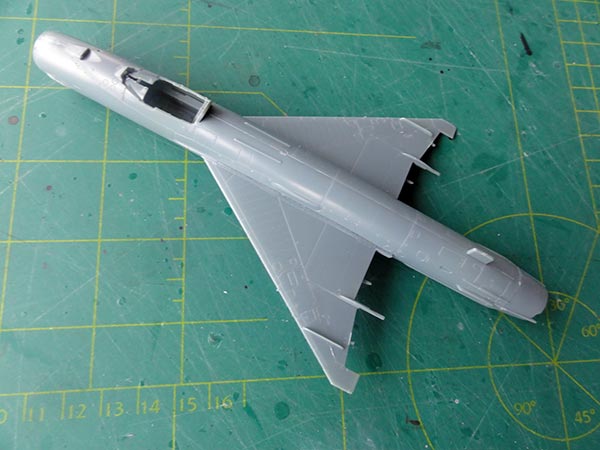
Note that wing halves do not have any raised shaped oval re-enforcement panels and the exhaust has "deep cut-outs" as seen on most "Sedivka Gorki" plant manufactured MF's.

No putty is required whatsoever during the built. A bit sanding is needed at the upper forward fuselage hatch.
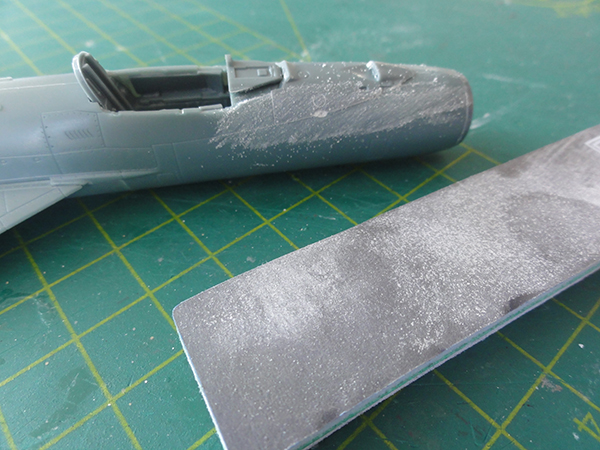
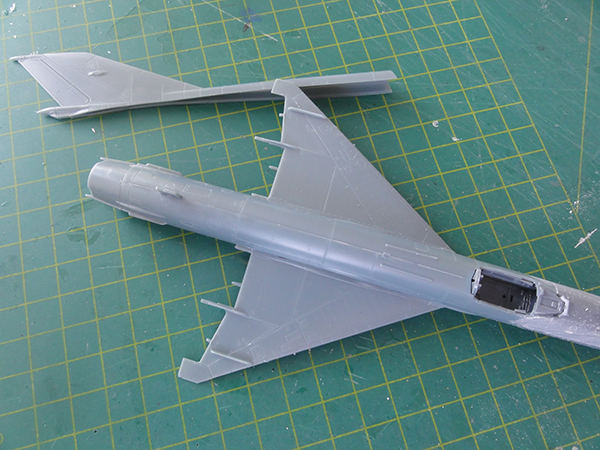
Main fuselage and wing assembly was done, the smaller parts were left for later. The wing has separate moving ailerons and inner flaps and is very well detailed. The wing fences are moulded on the wing but very thin as well as the various flap fairings. For the gun blast shields on the lower forward fuselage alternative etched metal parts are provided.
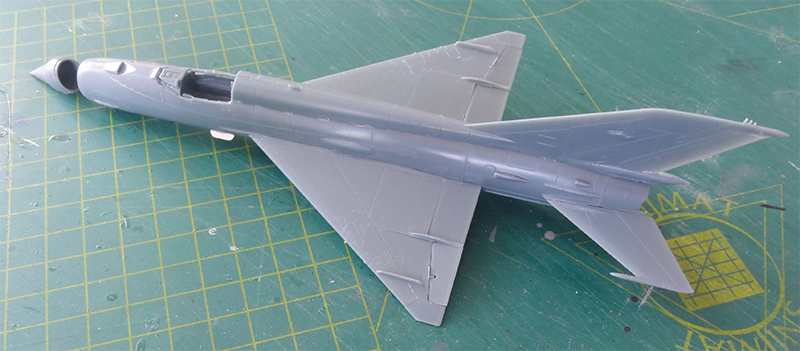
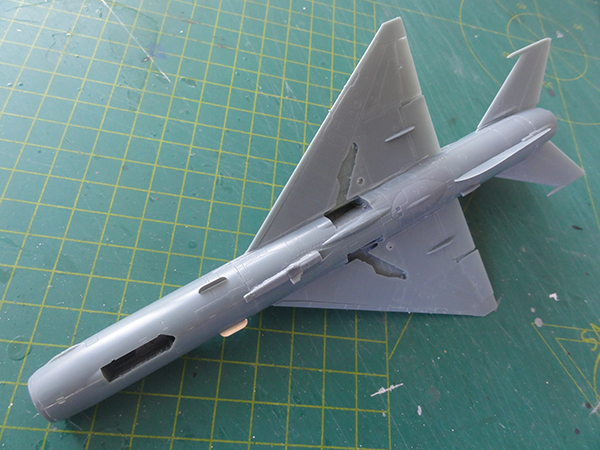
The fine long nose pitot was cut in two as it is very vulnerable. The forward section will be fitted later.
I airbrushed a base grey coat with Revell 75 steingrau Aqua to check for any issues and get a fine base for the paint schemes. But everything turned out to be fine.

Note how detailed and fine the airframe details such as panellines are in this kit....
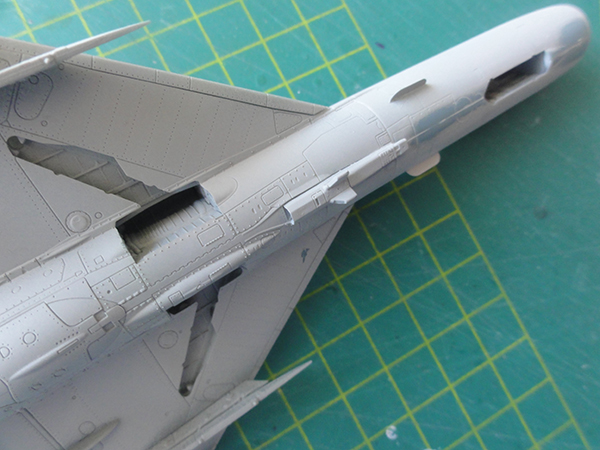
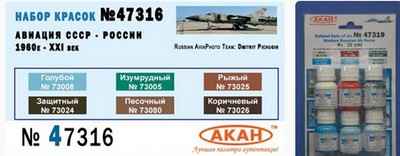
For the Mali Air Force scheme -E- with "African camouflage" I used these acrylic colours:
- lower surfaces light blue with AKAN 73008 acrylic
Mask the lower areas and than upper surfaces....
- green Revell 360 Aqua
- light brown Revell 17 Aqua
- dark brown Revell 82 Aqua
The edges between colours are soft. Simple tape and paper were used as mask during airbrushing. The inner areas of wheel bays were "loosely" airbrushed metal, it suggests also some wear here. For some areas you get masks in the kit.
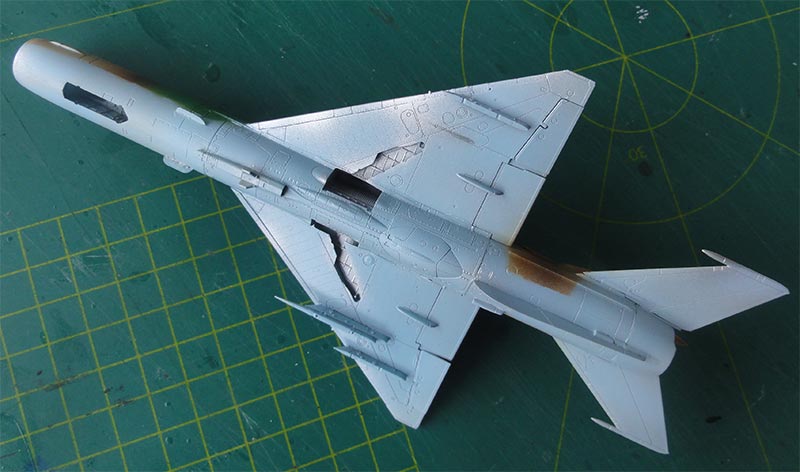
.
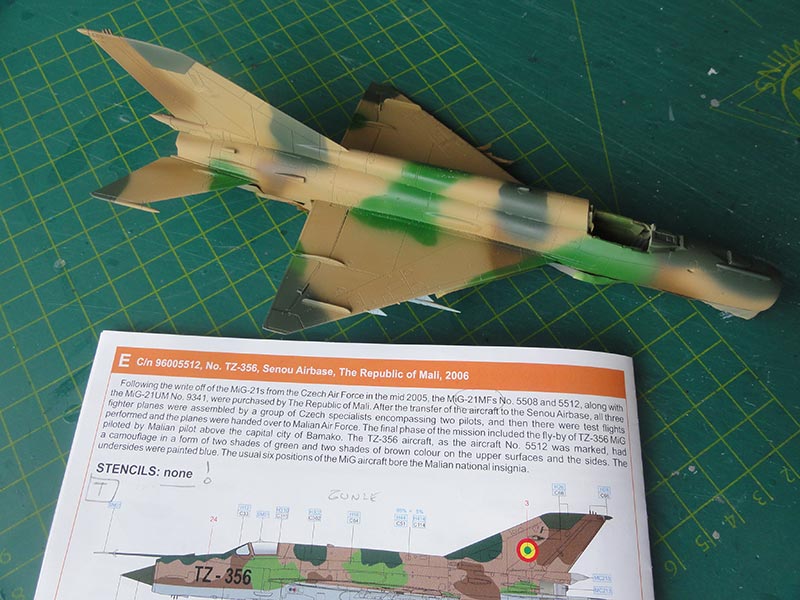
Before applying the decals, in order to avoid any decal "silvering" and because of the large amount of smaller stencils, a gloss varnish coat was airbrushed: Johnson Future / Pledge was used for that.
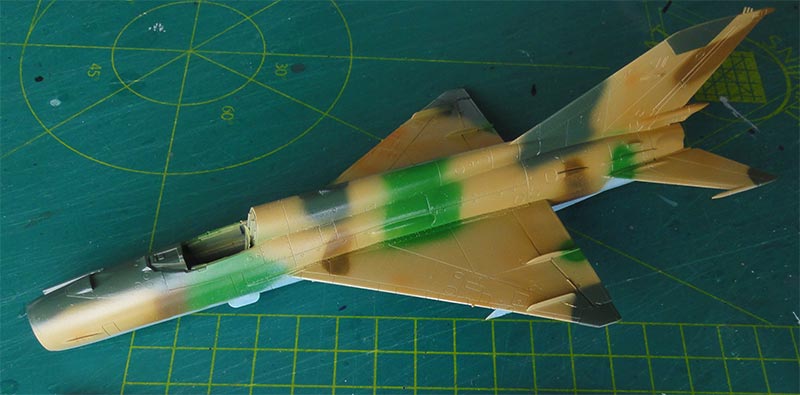
The exhaust area was painted metal.
The Eduard kit decals are fine. Although the isntructions indicate "no stencils used", I added a few smaller stencils in the usually the "blue" variety for the Mali african camouflage. A "few stencils" as the Mali MiG probably does not have many still visible in desert conditions.
The cockpit was painted interior was painted Emeral Green colour using AKAN 73005. Eduard provides painted well detailed etched metal consoles. The main ejection seat colour is medium grey.
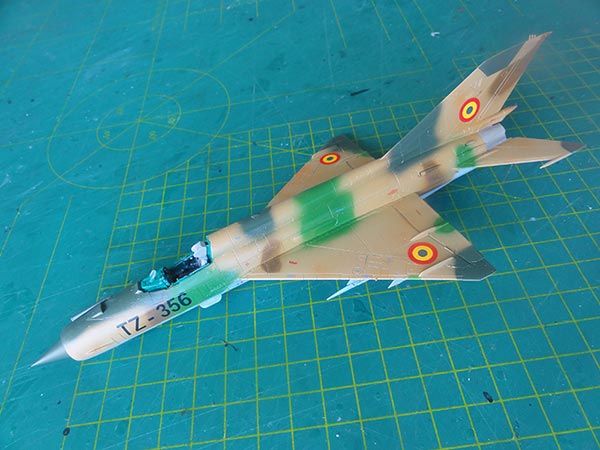
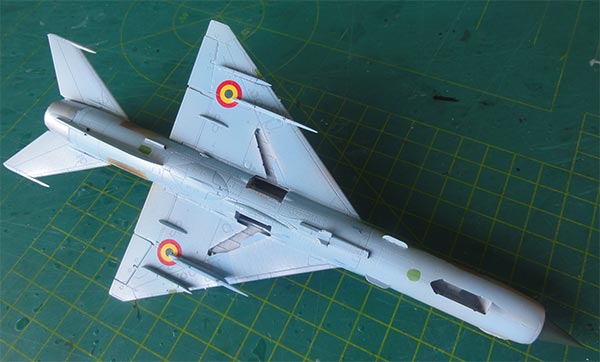
After all decal work was done, the model got its smaller parts. The undercarriage is also well detailed with even the hydraulic brake lines in etched metal. Wheel hubs were painted bright green (with Revell 364 "laubgrun" aqua). The small bottles #E2, E12 inside the bays were also painted in black, blue.
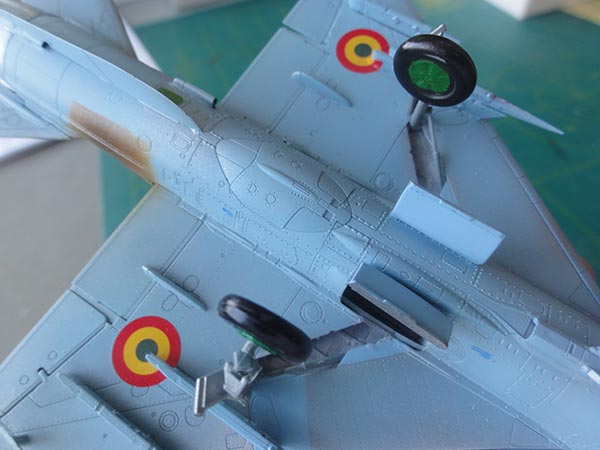
The canopy has also internal detail with etched metal. Note that there is an choice of canopy with/with out central mirror and two windshields. The long nose pitot forward plastic section was now placed, this is fine and the etched metal vane bits #PE27 were used on other kits. I also added a tiny vane on the left forward nose side from scrap. The side pitot tube #D81 was also set in place. Note that there are different types of pitots (small or large) are seen on MiG-21 aircraft.
The JATO bottles to assist take-off are a nice feature, they are light grey and were installed at nearly horizontal position.
Various stores and weapons can be made as desired for your model. Take care not to mix up the various pylons and lauch rails / adaptors. For the Mali MiG-21 MF a couple of RS-2US rockets (painted dull aluminium) and white R-13 AA missiles were installed as per kit.
The IFF "odd rods" from etched metal were set in place. Static dischargers, though provided in etched metal #PE30, were made from black painted fishing line, this is a bit finer.
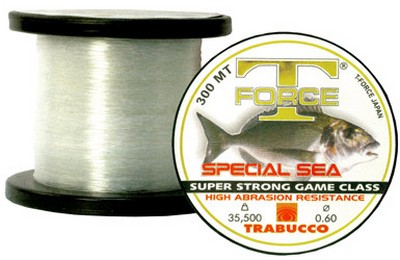
The canopy was set open to the right with the small rod #D2 to hold it. That completed this very good and easily the BEST MiG-21 MODEL IN 1/72. Eduard set the standard here!
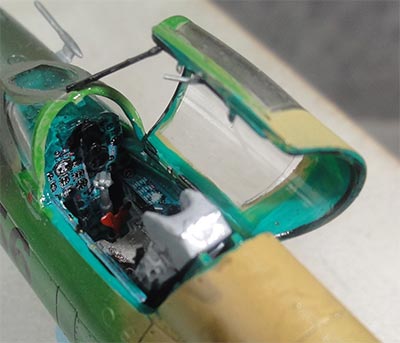
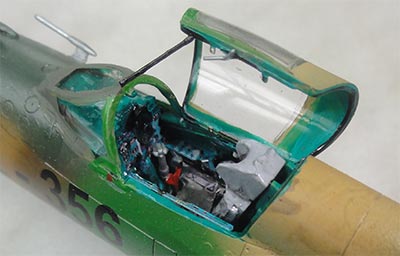
MALI
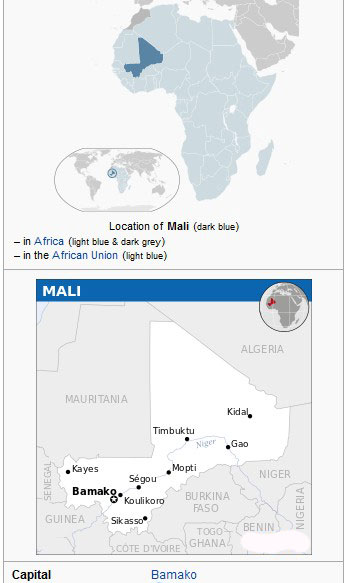

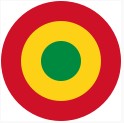
[ area: 1,240,000 sq.km | capital: Bamako | population 20 million | GDP nominal USD 1,000 per capita nominal ]
Mali was an empire from the 8th to 14th century. In the 1800s it was a colony of France across the Sahara from Senegal to Sudan. Mali gained independence in 1960. The last decades several revolutions and government changes appeared. Mali in the North East is largely Sahara desert with the famous twon Timbuktu also on the Niger river. From 2012 in the desert unrest started with the Tuareg rebellion and IS interference. Currently the unrest is still there and an International Coalition tries to stabilize the region.
The Mali air force "Force Aerienne de la Republique du Mali " was established in 1961 with French assistance starting with a few Broussards and C-47 transports. In the sixties the Soviet union started to provide "aid" and aircraft like AN-2 and Mi-4 helicopters. In the mid 1960s also the first jets arrived with MiG-17F fighters and a MiG-15UTI trainer. A dozen of MiG-21bis fighters delivered in 1972 as well as L-29 Delfin trainers. They were used in the conflicts with Upper volta / Burkina Faso in 1974 and 1985. In 2005 additional ex-Czech MiG-21 including a pair of MF and a pair of UM trainers were obtained. The few transports used are CASA C-295, Harbin Y-12, Basler BT-67 and AN-26 and a Cessna O-2A and SF.260 to maintain flying hours. Helicopters are a few Mi-24 "Hinds" attack helicopters, a pair of Eurocopter AS332 and even Chinese Z-9 ("Dauphin copy"). A single B727 is the VIP Presidential transport. It is reported that mid 2018 EMBRAER Super Tucano's were delivered.
The main Mali air force base is in the south-west at the capital airport Bamako (base aerienne 101 at the south side of Senou) with a secondary base aerienne 102 at Mopti.
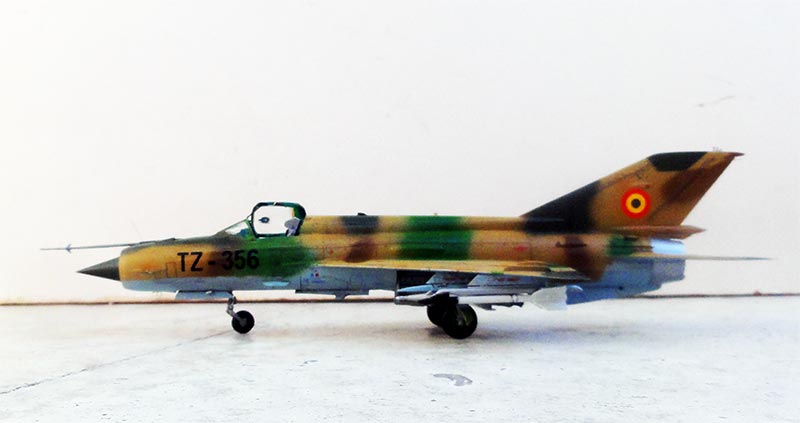
MiG-21 MF , "TZ-356" , Mali Air Force, 2006, Bamako

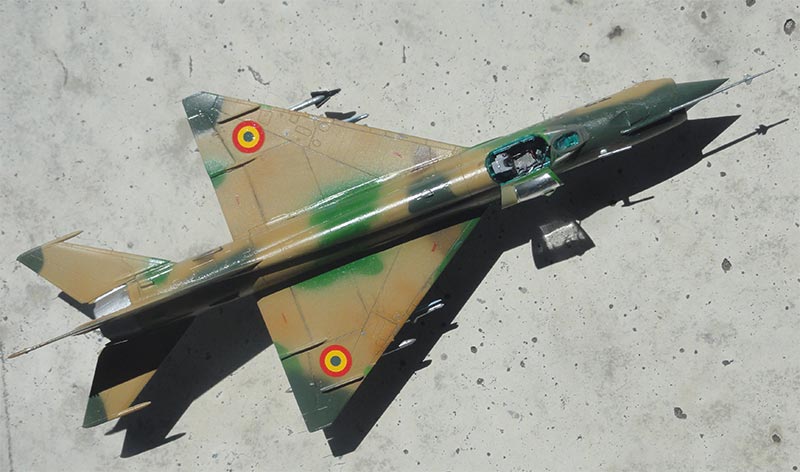

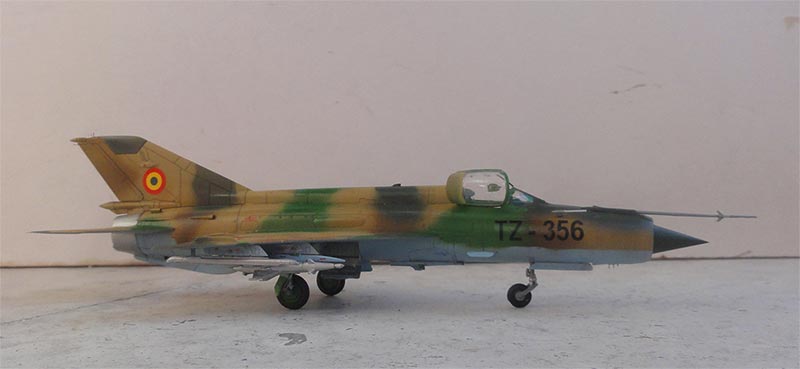
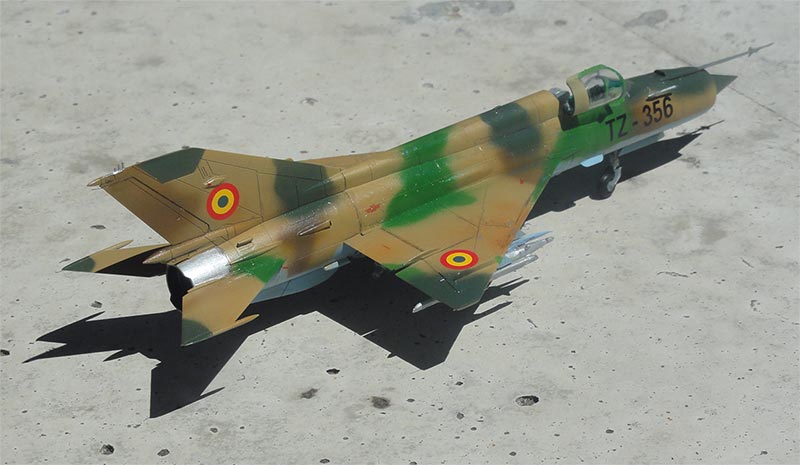
Bamako airport, Mali. Google Earth view, the base aerienne 101 is on the south side...

... the presidential B727 can be seen, a Basler BT-67 (turbo prop DC-3) next to it and a pair of SF.260 parked. The other larger aircraft are probably the Harbin transports. The smaller plane at the bottom is unidentified...


RV Aircraft
As noted on page 2, RV released a whole series of MiG-21 kits in 1/72 scale. These kits were also released as "basic kits" without decals, plastic instead of resin parts, no etched metal parts fret and no box, all packed in a plastic bag. Though shown in the simple instructions, the resin and etched fret are not in the bag but in plastic.
The "basic" RV MiG-21 Bis kit can be made with all provided, but I had plenty of spare parts to detail more if desired.
The fuselage seems correct for the "Bis"with the extended spine faired into the tail.
The kit will be made as an aircraft of the Serbia air force. A nice "Fishbed" World Part 1 decal set is from Lift Here set #906-LH with plenty of decals for no less that 17! schemes including countries like Cuba, USSR, Angola, former Yugoslavia, North Vietnam and Serbia (with early or later style roundel). You also get a small metal fret for detailing a single MiG-21 Bis kit, very nice!
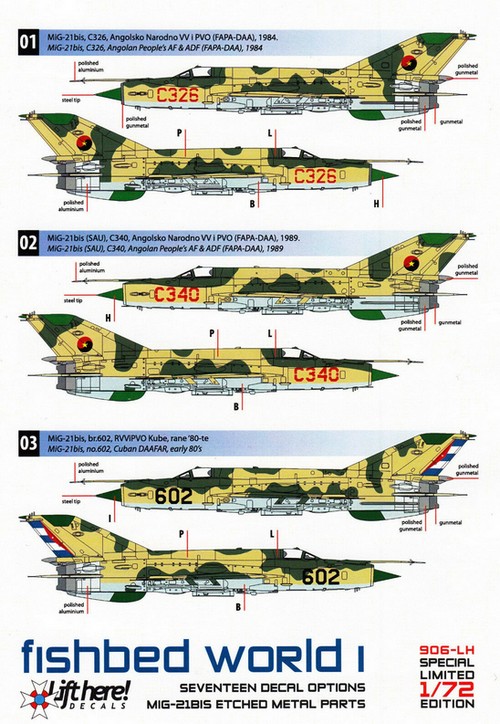
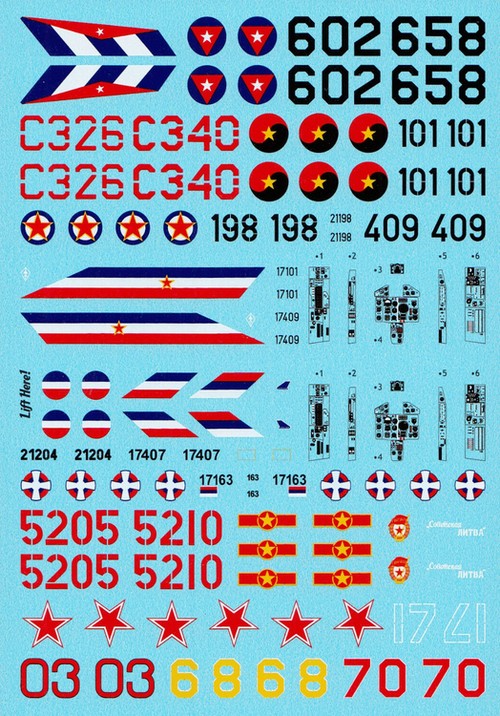
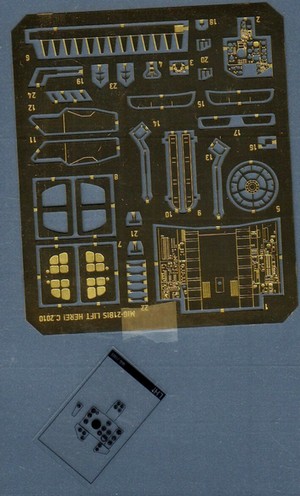
The basic construction of the RV kit was done as described on page 2, here a summary will be given.
There are no locating alignment pins, fit is not always good and putty and sanding is needed. Nothing very difficult but take care to align in variable intake bullet #1. In the kit are 2 different wing halves. I used the strengthened Bis wing halves with oval shaped panels on top with parts #15,16. The left over parts can be used for other kits!
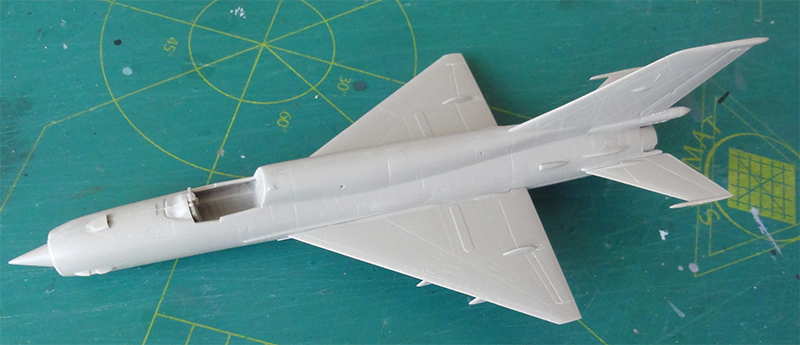
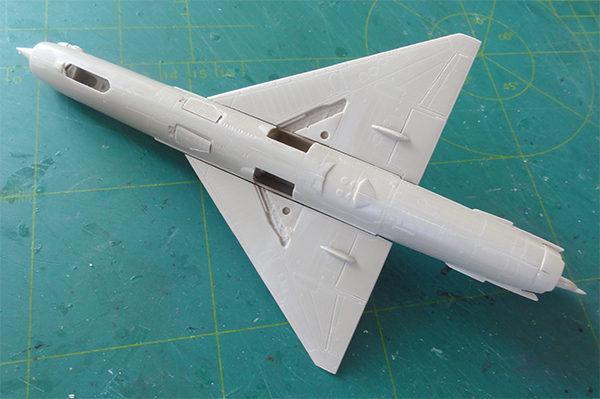
.
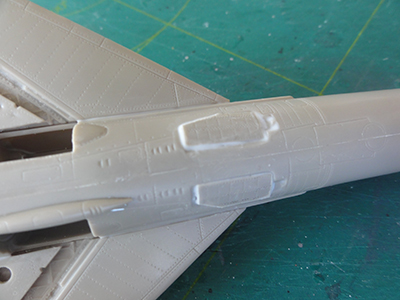
The forward lower airbrakes were set closed. Sand them thinner on their insides' and use putty or white glue to get a flush result.
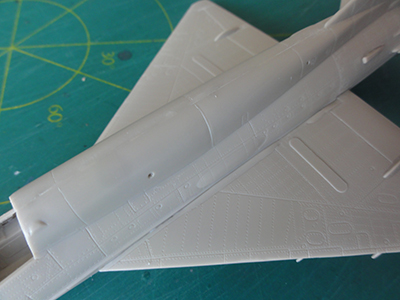
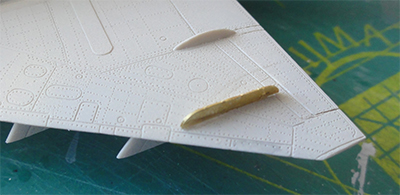
The various metal bits included in the Lift Here set include very nice thin fences. Use super glue and white glue to close any tiny gaps.
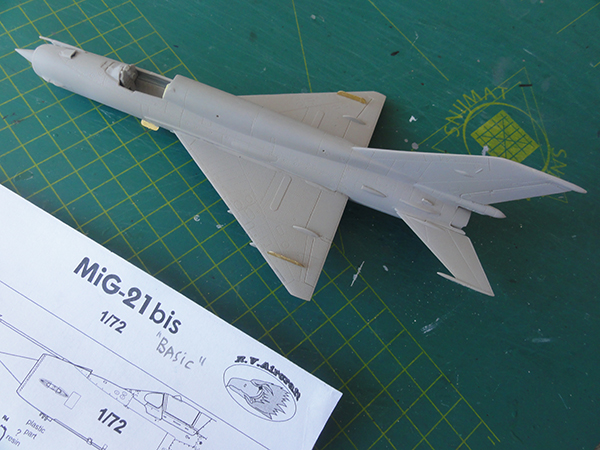
.
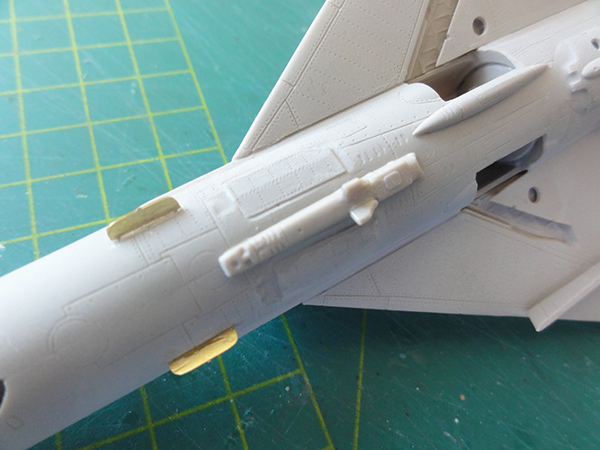
Install the pylons to give the desired colours directly as well.
The Lift Here decal set gives you two schemes for Serbia MiG-21bis: an early one (0f 1994) is green brown scheme and a later scheme (2006) in a grey camouflage scheme. I opted for the last one. The kit scheme drawing shows two sorts of grey but I saw looking at photos three grey colours! Airbrushed were these acrylic colours:
-1- approx. FS36375 grey Gunze Sangyo 308 overall first;
-2- approx. FS36320 medium grey Gunze Sangyo 307;
-3- Darker grey approx. BSC 638 with Gunze 331.
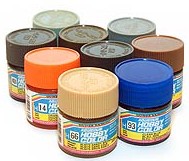
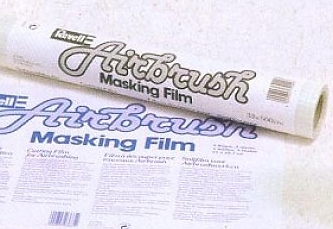
Masking with tape and film is needed when applying these colours. It is a wrap around scheme.
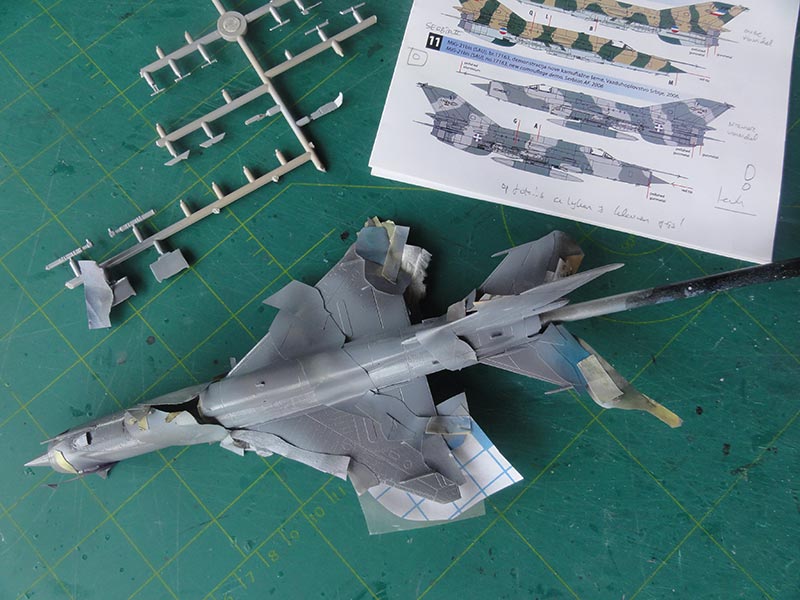

The result....

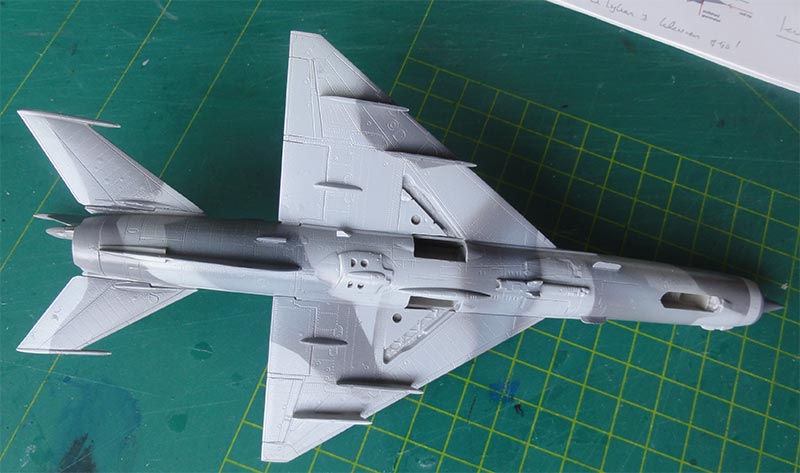
It was decided to add the central fuel tank so this was also airbrushed separately along with various undercarriage doors etc.
The few Serbia decals were added but also a lot of stencilling found in other decals set, like a dedicated Eduard MiG-21 stencilling set. I used the "blue" text variety in most places.
Next steps were adding all the details, like landing gears, doors etc. l added brake lines from thin metal wire, using the etched metal fret as template. The interior of the gear bays were painted dull aluminium, the gear legs light grey and wheel hubs bright green (with Revell 364 "laubgrun" aqua).

The windscreen is a bit massive, I needed to remove some plastic at the instrument cover panel in order to get it to fit.
The cockpit interior got the typical Emeral Green colour using AKAN 73005 including the inside canopy frame. Painted als was the nose intake ring that is dark grey/metal and the small probe on the nose cone tip is red. An area at the jet exhaust was painted bare metal.
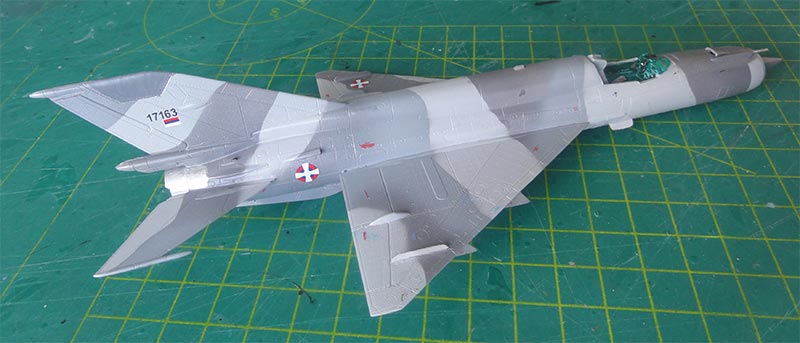
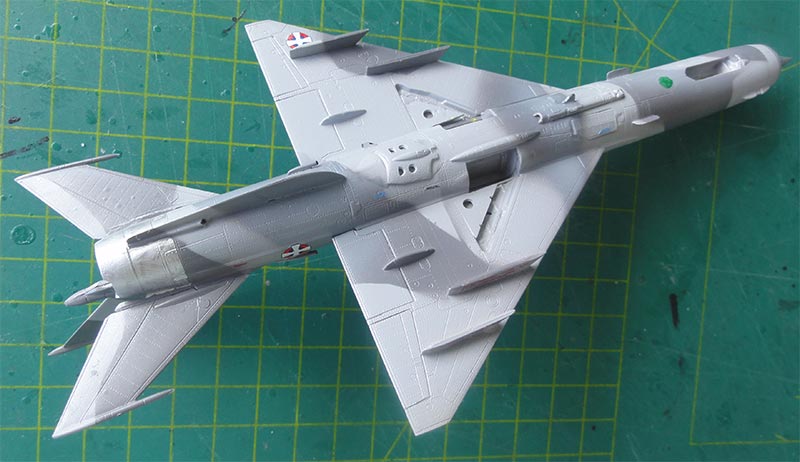
There are 2 types of main wheels with slightly different hubs, I used parts #42 for the "bis". Five static dischargers were added from flexible fishing line at the wing tip trailing edges, stabilizer trailing edge and above the rudder. These were than painted black. Also a few unguided rocket pods were set in place, these were retrieved from an Eduard MiG-21 (seen above).
A semi-matt gloss coat was set over the model using a mix of Johnson Future / Pledge thinned with plain 30% alkohol and 10% Tamiya Flat base.
The canopy was set open, a rod added. The large pitot tube was made of a metal needle and smaller pitots and sensors were set in place. And the model was ready!

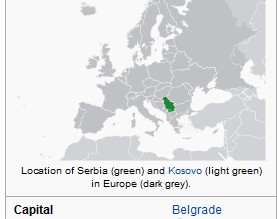


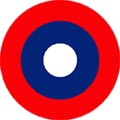

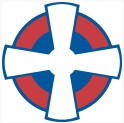
[ area 77,500 sq.km excl. 11,000 sq.km Kosovo| capital Belgrade | population 7 million excl. 2 million Kosovo | GDP per capita EUR 6000 nominal ]
Serbia is located in the Balkan and was formed as one of the regions in former Yugoslavia. Yugoslavia itself under control of the leader Tito was formed after the Second World War and formed a relatively "neural" country between NATO and Warsaw pact. Even Western aircraft were acquired after the Second World War such as Mosquitos', F-84 Thunderjets, F-86 Sabres and F-86D Sabredogs. Tito aligned more closely with the Soviet Union from the end 1950s with aircraft obtained like MiG-21 F13 fighters. Local aircraft industry also was established that produced types like the G-2 Galeb trainer and Orao attack aircraft that was developed with SOKO from Romania. Meanwhile other MiG-21 versions were introduced and in 1987 the first MiG-29 "Fulcrum".
Tito's dead in 1980 led to instability and at the same time all over Eastern Europe including the Soviet Union the situation changed. Within Yugoslavia the region Slovenia declared in 1991 independence soon followed by Croatia. Local wars in Yugoslavia regions arised between several ethnic groups that were fought in the 1990s and 2000s. NATO countries also tried to intervene from 1999 with "Operation Allied Force" that included both ground and air wars. Serbia and Montenegro formed a two state federation. Finally in 2006 Serbia and Montenegro became separate republics and in Serbia MiG-21's were still used as well as the MiG-29. Still there are local unrests in the Kosovo region which is currently within Serbia and Albania. The Serbia Air Force now operates in small numbers types like still the MiG-29, G-4 Super Galebs ("bought back" from Montenegro) and various Mil helicopters.
The main base is Batajnica with the fighters near Belgrade with the other bases at Kraljevo, Nis/ Konstantin.
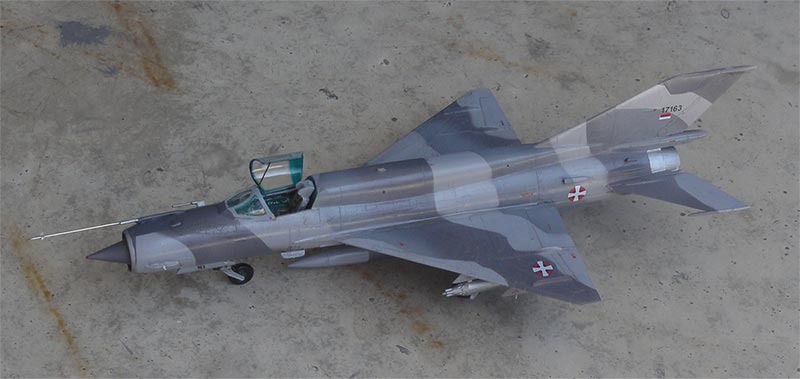
MiG-21bis, Serbia, 2006
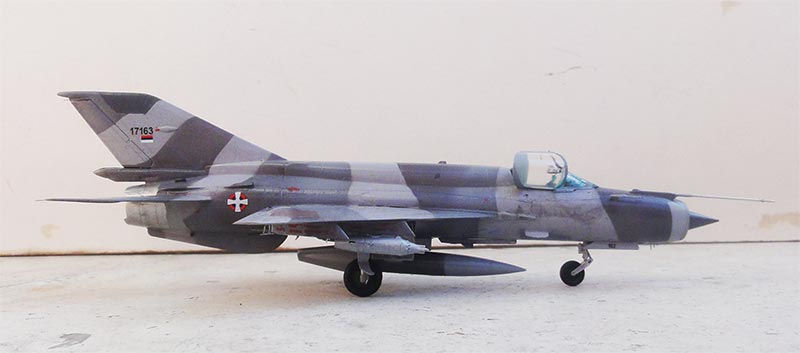


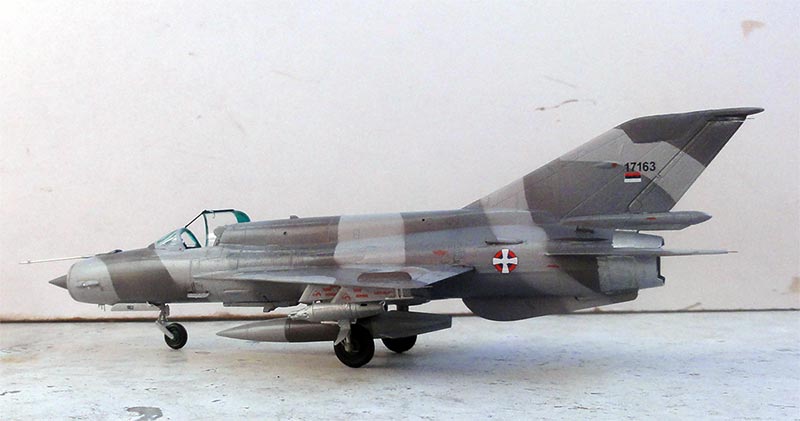
Some Google Earth views of the main fighter base at Batajnica. The various MiGs can be seen.
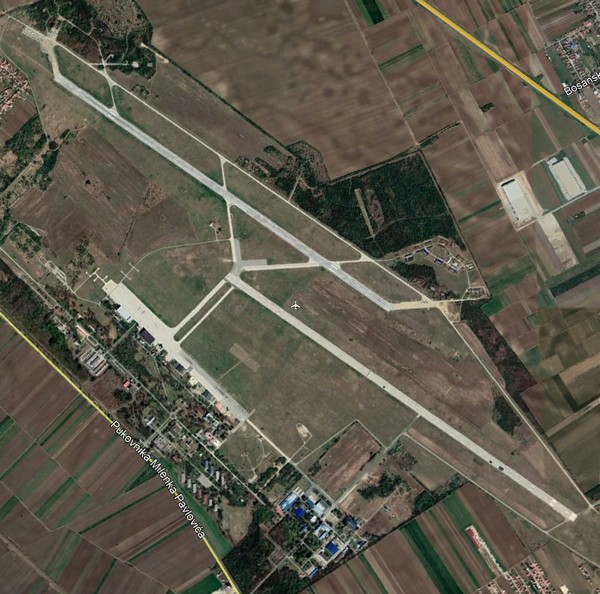
some MiG-29....
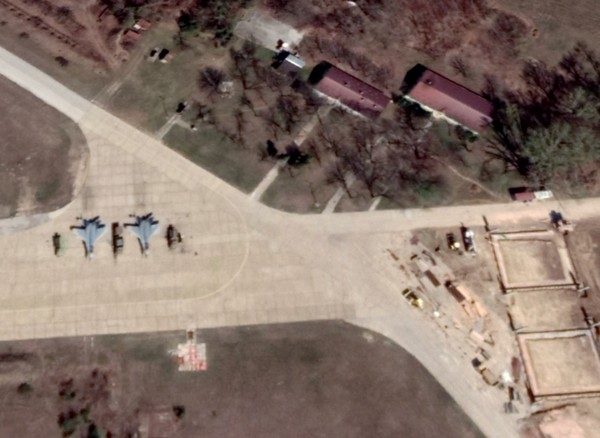
storage area... with some Oraos or Super Galebs as well?
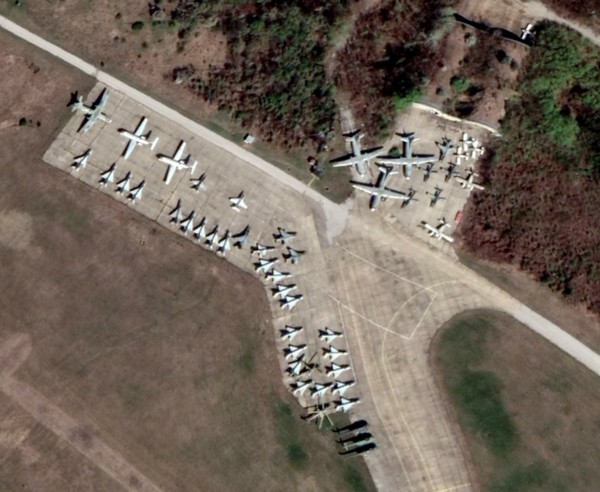
Back to 1/72 Models.......

(c) Copyright Meindert "designer"/ All rights reserved. Your comments are welcomed by webmaster
Created this page July 6, 2019